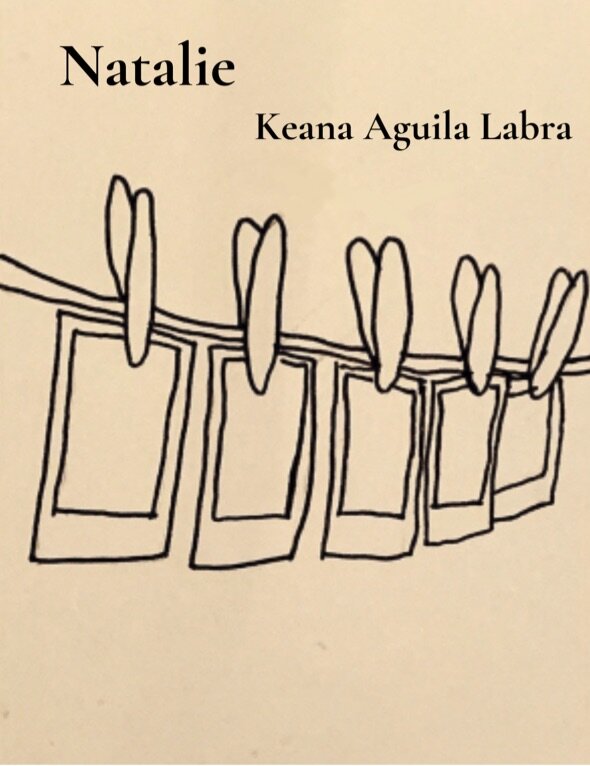Review of “Natalie”
In Keana Aguila Labra’s micro-chapbook “Natalie,” Labra memorializes her late high school friend, Natalie, with intermittent callbacks to the life Natalie once lived. Labra expertly captures the complexity of loss beyond the typical five stages of grief that accompany it. The book follows Labra’s stream of consciousness in a messy fashion, appropriately so. “Natalie” features the dizzying emotion of wondering what one could have done to prevent a loved one’s death, which accompanies the bittersweet feeling of reminiscing times shared while they were alive.
To begin, Labra introduces Natalie as a subject whose fate has been tampered with. Her introduction is particularly captivating, and serves as a defining moment for the book. She makes it known that there will only ever be one Natalie.
“the years collapse
fragile flower wilted in the pages
upon the cracked tiles of your
wide-toothed smile”
Although Labra has come to adjust to “time traveling,” making way for sweet callbacks to Natalie’s existence, she snaps into a habit of bargaining, contemplating her role in Natalie’s life, or rather, the role she wishes she could have played in Natalie’s life. Her denial, paralleling the first stage of grief, is followed with questions of ‘how,’ ‘aren’t we,’ and ‘what if,’ and Labra in turn dives deeper into what is known as the third stage of grief: bargaining. Throughout “Natalie,” she finds herself slipping into sadness as unsolicited memories leak into her conscience.
“I'm sitting in the backseat of the
family car. I sing to appreciate the
nostalgia that accompanies music.
Then, I start thinking of you & how
old you would have been. But,
there will be no tears today.”
“Natalie” carries weight especially in its portrayal of what resembles the fourth stage of grief: depression. Labra illustrates this stage as a fleeting, but striking one. The deep sadness notably pulls on the heartstrings of Labra’s audience, as she has successfully put this pain in perspective—an emotional pain that can easily intertwine with lung pains and bone aches.
However, Labra’s exemplary strength lies in her ability to highlight the stage of acceptance amidst the seemingly messy experience that is loss. She commemorates the life Natalie led, and the memory she continues to lead in Labra’s heart—a memory of presence, tranquility, and love in its purest form.
While I myself haven’t dealt with loss directly, Labra’s intentions to maintain vulnerability and transparency throughout “Natalie” is seamless, as if she’s able to effortlessly convey the convoluted process of grief. What it boils down to is just that: vulnerability and transparency. Labra is honest and unafraid in her approach to loss. She approaches it with promise and love for Natalie, which gives potential readers all the more reason to read the beautifully written micro-chapbook that is “Natalie.”

